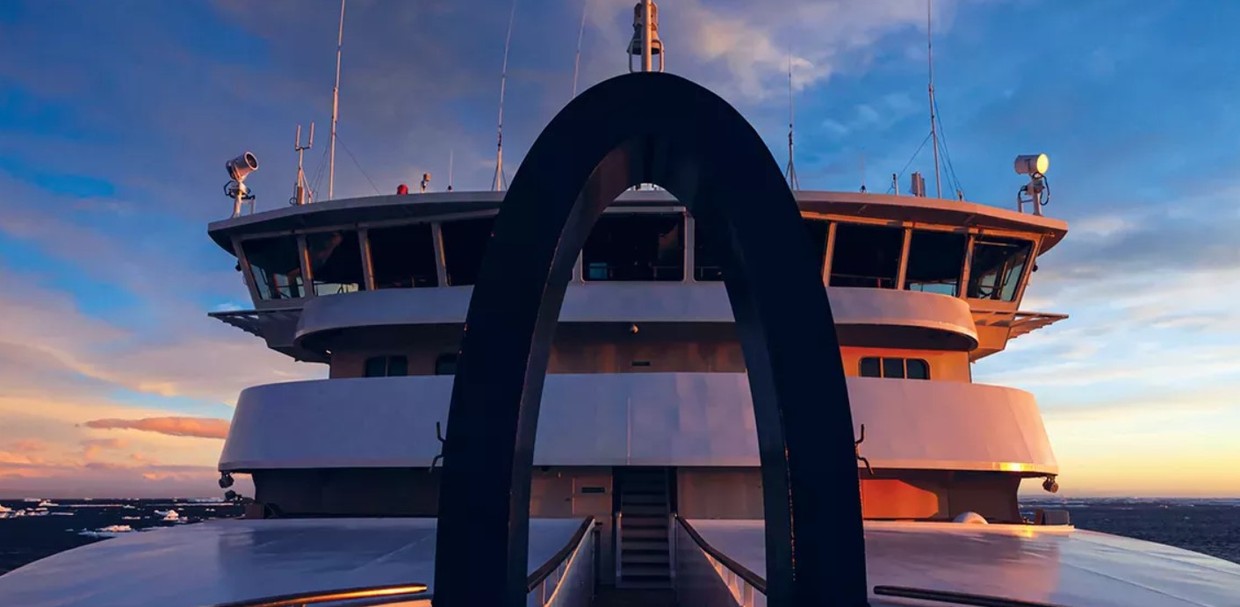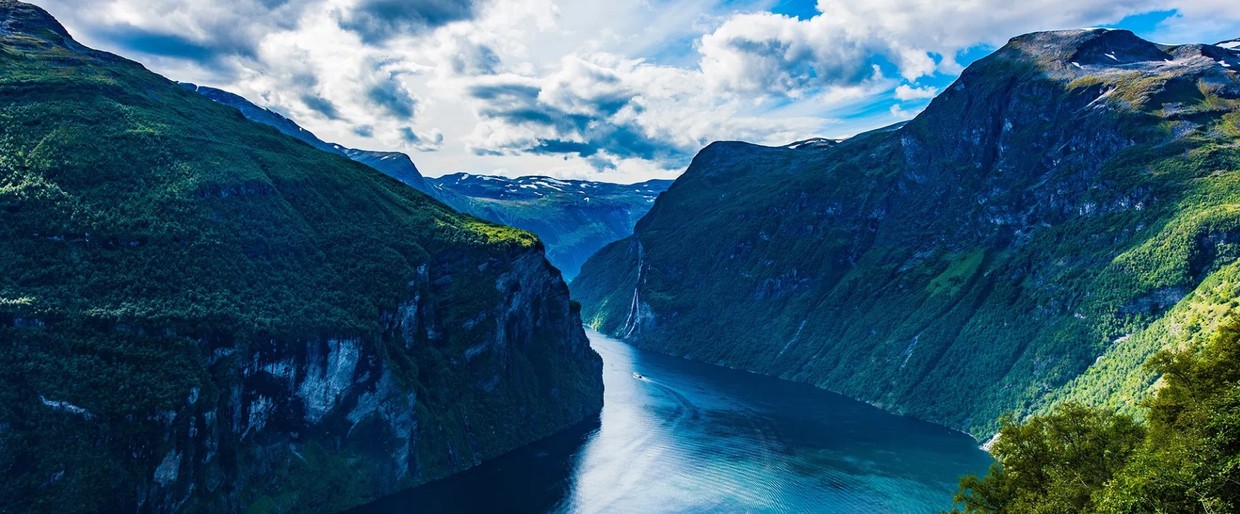from$ 15006 AUD
Note: Current p/p indicative rate. Final price may change due to currency fluctuations.
Diana
Tromso to Bergen
Overview
Explore the wonders of Norway’s fjordland, mirror-clear waters sandwiched between jagged peaks, then take in the wild splendour of Norway’s Lofoten Islands, before exploring the Shetland Islands with our expansive 10-night Fjords and Islands Discovery cruise. The voyage sails from the Arctic city of Tromso and shadows the Norwegian coast 2,000 km, serenely cruising into the country’s fjords. Here, we visit Sognefjord, Norway’s longest, and cruise as far as Flam, passing waterfalls and picturesque towns before ending in Norway’s historic city of Bergen, the gateway to the fjords. Our boutique expedition ship takes you into the heart of places that matter in this awe-inspiring northern landscape
Departures
Cruise Itinerary
Known as the Arctic gateway, Tromso is a remote Norwegian city at 69° north, 250 miles above the Arctic Circle, where you can take in the soft glow of the midnight sun. Learn more about early polar explorations at the Polar Museum. Famed for the Northern Lights on winter nights, you can find out more about this natural spectacle at the Science Centre.
See the Lofoten Islands, an archipelago just above the Arctic Circle, from close up. The scenery is otherworldly, little red-painted houses against a backdrop of craggy, mountainous isles. In the height of summer the white sand beaches look almost like the South Seas – and this is the Land of the Midnight Sun for almost two months each year. Gravdal is a village port on Buksnesfjorden, just along from Leknes, the islands’ main town. Tours take in the mountainous interior while there are also whale watching excursions. Trollfjorden doesn’t come more startling than this – a 100 m-wide entrance to a narrow fjord with near-vertical mountainous sides up to 1,100 m high. The passage slices through Austvågøya, on the edge of the Lofoten Islands, and there’s no way in, other than by boat or a dizzying hike. Appreciate the silence while you cruise gently onward as white-tailed eagles soar overhead - and marvel as the ship slowly spins around to leave.
Glomfjord is a village in the municipality of Meløy in Nordland county, Norway. The industrial community is located along Norwegian County Road 17 at the head of the Glomfjorden, just north of the Arctic Circle. The 1.14-square-kilometre village has a population of 1,077 and a population density of 945 inhabitants per square kilometre. Although located north of the Arctic Circle and not far from Norway's second largest glacier Svartisen, the climate is well suited for living due to the Gulf Stream, albeit rather wet. The temperature is seldom below −10 °C (14 °F) during winter time. During summer time the sun does not set. The midnight sun also makes the plants grow faster.
Tucked away amongst the hills of Trondheim fjord, this is a Viking city founded in the 11th century that is filled with colourful timber buildings. Mighty Kristiansten Fortress is the country’s best preserved fortification, the architectural pot-pourri of Nidaros Cathedral is the burial site of Viking king St Olav while Stiftsgården, the royal residence, is believed to be the largest wooden building in northern Europe. Boat trips head to unhurried beauty spots.
As Romdalsfjord nears the open sea it’s a very different place, bigger and even more placid yet still wild – from the town of Molde it’s reckoned you can see 222 peaks. From here the Atlantic Road darts across bridges and islands on its extraordinary journey, and a replica Viking ship departs for Håholmen island, an 18th-century fishing port. Another boat takes you into the spine-tingling caves of Bergtatt, where marble has been mined for more than 80 years. Of all Norway’s fjords, 88 km Romsdalsfjord is perhaps the most beautiful, a green and pleasant land with a mountain backdrop (not least Trollveggen, at 1,700 m the highest peak in northern Europe) that drifts away into the distance. The small town of Åndalsnes sits at the end, at the head of the Romsdal valley by the mouth of the river Rauma.
Geirangerfjord is a truly magnificent fjord, a UNESCO World Heritage Site for its staggering mix of snow-capped peaks and clear blue waters, lush greenery and the magnificent Seven Sisters waterfalls. See the falls from a tiny boat, or take a bus along hair-raising roads to the 1,500 m Mount Dalsnibba Skywalk viewpoint and learn about your surroundings at the Norwegian Fjord Centre. The village of Geiranger at the head of the fjord is well over 100 km from the sea.
A must-see town at the mouth of Geirangerfjord, Alesund was rebuilt in fairytale Art Nouveau style after a 1904 fire. The turrets and spires look wonderfully out of place amidst the fjords, peaks and dramatic waters – should you explore the architecture or go on a kayaking expedition? Other experiences include Atlanterhavsparken, one of northern Europe’s biggest saltwater aquariums, set into the coastal rocks.
The solid, stone-built town of Lerwick is capital of the Shetland Islands, a subarctic Scottish archipelago nearer Bergen in Norway than Inverness. Vikings once ruled, yet the port has a Dutch flair – 17th-century Fort Charlotte was built during the first Anglo-Dutch War. Absorb 6,000 years of history at the modern Shetland Museum and see it at the waterfront Jarlshof Prehistoric and Norse Settlement on the island’s southern tip. Visit shaggy Shetland ponies or take a boat trip to the isle of Mousa to see dolphins and seals. Unst, the northernmost inhabited British island, is fringed by beaches and daunting cliffs. It might be a Shetland isle but it’s also Treasure Island, the map of Robert Louis Stevenson’s pirate hideaway echoing Unst – the writer visited in 1869 with his father, designer of Muckle Flugga lighthouse which still sits atop a jagged rock islet and can be viewed on a stirring walk. Unst is also known for Viking relics, 16th-century Muness Castle and a fabulous seabird population including puffins and gannets.
Lerwick is the capital – and only real town – of the Shetland Islands, a subarctic archipelago of some 100 islands that is closer to Bergen than Inverness. The Shetlands were Viking ruled until the 15th century, and despite the Norseman ceding control, the culture remained notably Norse-tinged as can be seen at the Shetland Museum and Archives in Lerwick. More history awaits at Fort Charlotte, a five-sided artillery, and the Bod of Gremista, an 18th-century fishing booth-turned textile museum. If time allows, head for Jarlshof, an hour’s drive from Lerwick. This Iron Age broch and Norse settlement have more than 4,000 years of human activity on one site. If venturing outside of Lerwick to Jarlshof for example, be sure to keep an eye out for world-famous tiny Shetland ponies. Around 1,500 of them roam free throughout the archipelago.
Capital of the fjords, the village of Flåm is unmissable. The village sits at the end of Aurlandsfjord, a branch of huge Sognefjord – at 204 km Norway’s longest, a dream voyage in itself – and the 650 m-high Stegastein viewing platform shows the area, a world of waterfalls and towering rock faces, in all its glory. Don’t miss the Flåm Railway, a 20 km ride on one of the world’s steepest, most spectacular rides. Deep in Sognefjord, the ancient village of Vik opens up the fjord’s dramatically different arms – waterfall-fringed Arnafjord and tiny, narrow and steep-sided Finnafjord to the west, and the wild World Heritage landscape of Nærøyfjord, itself 17 km long, to the east. Boats and buses explore everywhere from the shimmering waters to the Vikafjellet mountains, across which are the delights of Flåm. Vik itself sits amid rich farmland – and has a dramatic 26 m-high statue of Viking saga hero Fridtjov the Bold.
The magnificent gateway to the fjords, Bergen is a medieval port surrounded by mountains. From the beauty of Bryggen, the seafront maze of ancient timber buildings, to the modern Fløibanen Funicular that soars up Fløyen peak for awesome views, no one would want to miss this city. Exploring on foot is dreamlike but there are other attractions – the aquarium, the four-building KODE art museum encompassing Norway’s Edvard Munch as well as Picasso and more while outside town is composer Edvard Grieg’s enchanting house.
Itineraries are subject to change.
Diana

Vessel Type: Expedition Ship Length: 125 meters Passenger Capacity: 192 Built: 2022-2023 Arriving in early 2023, SH Diana will be the largest ship in our fleet, providing elegant and spacious 5-star accommodation for 192 guests in 96 spacious staterooms and suites, the vast majority with large balconies. Operated by an onboard team of 140 she will provide the highest levels of personal service and take Swan Hellenic back to its roots when she launches, exploring the Mediterranean and its famous sites of antiquity. Now sit back, relax and take a moment to get to know this amazing new ship, purpose-designed for our unique cultural expedition cruises. Named after the Ancient Roman goddess of light, the moon, hunting and the wilderness, SH Diana been specially designed for worldwide cruising to explore the most inspiring and inaccessible places on earth. Building on the outstanding amenities of her sister ships, she adds a dedicated Multifunctional Room next to the Observation Lounge, a Private Dining Room for special occasions, and two tenders which bring guests a comfortable alternative to Zodiacs for expedition landings. A Polar Class 6 ice-strengthened hull combines with extra-large stabilisers to make your journey as comfortable as possible. SH Diana has been designed for immersive experiences, with extensive outside deck areas, multiple observation points and bright, open and relaxing public spaces with unobstructed views. The pleasure and safety of our guests is paramount at all times, cared for by our attentive crew and seasoned expedition leaders. Cutting edge hygiene technology protects the health of all on board to the highest standards and includes air conditioning with UV sanitisation systems. SH Diana’s 96 staterooms , including 11 suites, are each a superbly comfortable home from home and all feature panoramic sea views, a flame-effect fireplace, original works of art, plush couches, premium pocket sprung mattresses, en-suite bathrooms with glass-enclosed rain showers, and Egyptian cotton towels, bathrobes and sheets. A pillow menu offers customised head and neck comfort during rest, while a large flat screen TV, espresso machine with Illy premium coffee, tea making facilities with the finest Kusmi teas, and a minibar with refreshments enhance relaxation at any time. In-room dining is of course available at all hours.
Highlights
• Take in the soft glow of the midnight sun above the Arctic Circle • Get up close to the mighty Svartisen glacier, Norway’s second largest • Learn about Viking history and the legacy of these mighty seafarers across the north • Experience the dramatic, faraway beauty of the Shetland Islands and meet Shetland ponies • Take a ride on the Flåm Railway, a 20 km ride on one of the world’s steepest, most spectacular train journeys
Map



